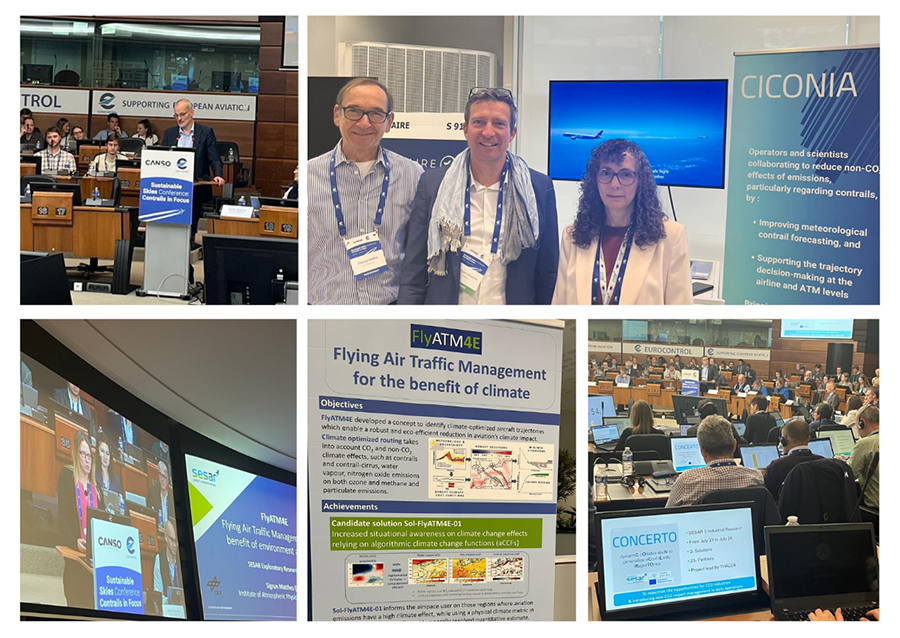The role of research and innovation in minimising the impact of contrails and contrail-induced cirrus clouds on the climate was at the centre of discussions at the EUROCONTROL- CANSO Sustainable Skies Conference: Contrails in Focus on 7-8 November.
Bringing together 2,000 scientists, researchers, aviation representatives, policy makers, the conference took a deep dive into aviation industry's impact on non-CO2 emissions, with contrails and associated cirrus clouds coming under scrutiny.
Over the course of the two days, world-leading experts:
-
took stock of the current state of knowledge on the topic;
-
explored the state-of-the-art methods for detecting and monitoring contrails and cirrus clouds;
-
looked at current methods and technologies for predicting the formation of contrails and cirrus clouds and estimating their impact on the climate (and the interdependencies with CO2); and
-
discussed possible ways of minimising contrail formation and the challenges of operationalising mitigation measures at scale.
The conference was an opportunity for SESAR research partners to share the results of their research into this topic. Since 2016, SESAR research and innovation have been investigating contrails and weather phenomena, such as FlyATM4E, CREATE. The research addressed local air quality around airports focusing on particulate matter, NOX and SOX, and the impact of non-CO2 emissions on the climate. Exploratory research continues now in the Digital European Sky programme with projects, such as E-CONTRAIL and AEROPLANE, while industrial research projects like CONCERTO and
CICONIA are working on new SESAR solutions to be delivered by 2026. A core objective is to investigate how to obtain MET services capable of providing a prediction of eco-sensitive areas (called also ECO-AREAS), and then monitor their evolution in real time.
SESAR research is also considering concepts to re-route some flights or all flights from the most critical eco-areas, the so-called “big hits”. But deviating a flight from its planned trajectory might increase fuel burn and CO2 emissions as well as flight time. “It is a reminder again of the complexity of ATM and the challenge of striking the right balance between CO2 and CO2. It is our goal to provide further insights into these topics so that decision makers have the full picture when deciding on mitigation measures,” said Andreas Boschen, Executive Director of the SESAR 3 JU, who closed the conference.
Read more about the conference, watch back the proceedings or download the presentations:
https://www.eurocontrol.int/event/sustainable-skies-conference-contrails-focus
Find out more about the exhibiting SESAR research projects:
E-CONTRAIL
CONCERTO
AEROPLANE
CICONIA
CREATE
FlyATM4E

